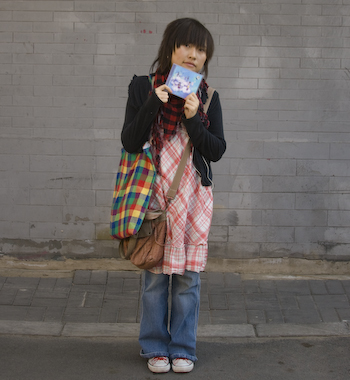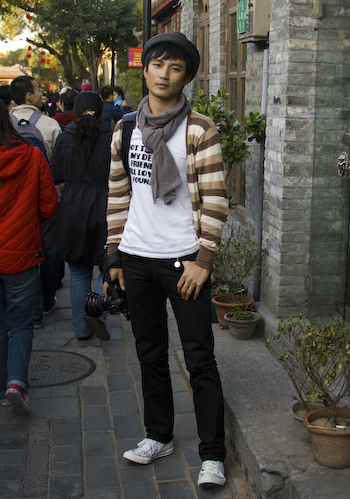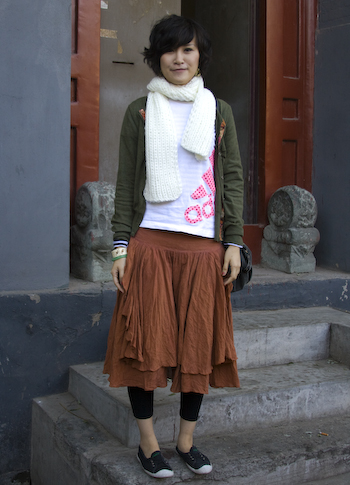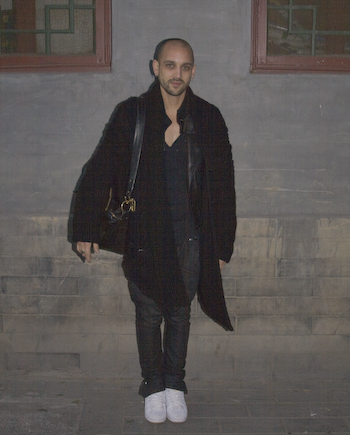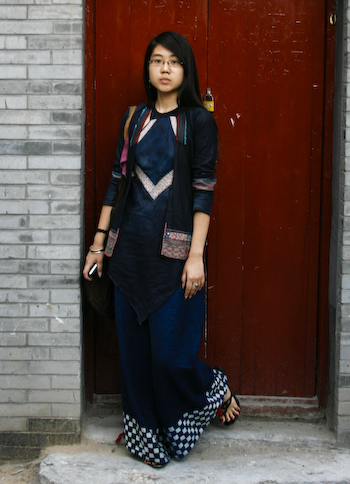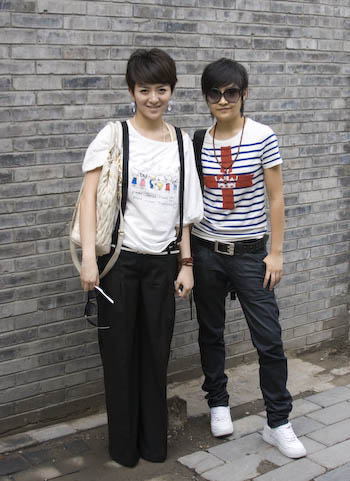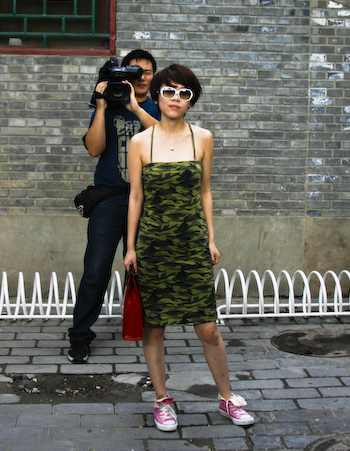Every May and June, fashion columnists pour out statements like “this summer, long, lightweight scarves in silk or linen are a must-haves” followed by a list of justifications like avoiding sun-burns and a roster of Hollywood actresses adopting the style. This summer saw even more New Yorkers pairing scarves with tank tops and tees. New York Times photographer Bill Cunningham has amusing reflections on this trend. The blog Stuff White People Like, recently made into a guidebook, also comments on this seasonless love of scarves, apparently a noted characteristic of the author’s hipster/borgeousie who seem similar to the bobos in Bobos in Paradise.
In Beijing, the summer is too ghastly to justify donning a scarf even for the very most affected fashionistas. Only in Autumn did the scarf paired with summery garments emerge across the city. Over the last couple of weeks, almost every young person has been wearing a scarf, usually without a jacket. In daytime, Autumn temperatures can be hot, while at night the wind blows hard and it is chilly. I comfortably wear a tee shirt in the day and then add a sweater and tweed coat at night.
These photos of pedestrians around the city celebrate the warm part of Autumn, which just passed.
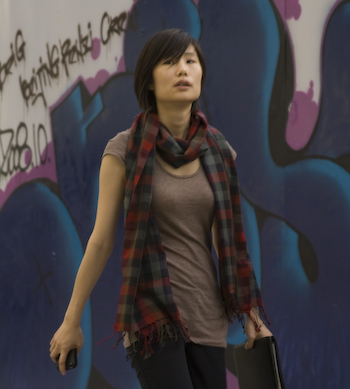
1. If temperatures do drop dramatically, keeping the neck warm is essential. Presumably, no one ever got a cold from exposing their arms.
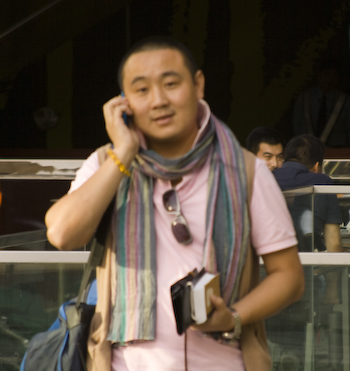
2. This fairly heavy scarf could be pulled tight at night when gales blow. This fellow looks to lack a single pretentious bone in his body, so the scarf cannot be to show-off.
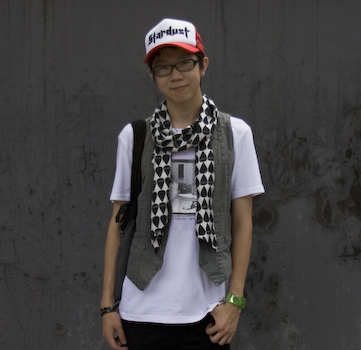
3. Perhaps scarves make somewhat more sense with a vest.
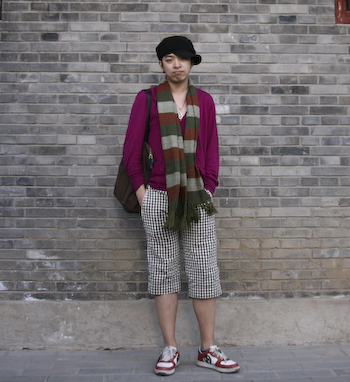
4. A low-neck sweater, wool scarf and shorts? English schoolboys exposed their legs in the depths of winter. However, this fellow has clearly become too Westernized, because in China legs and feet are considered to be the most important areas to keep warm.
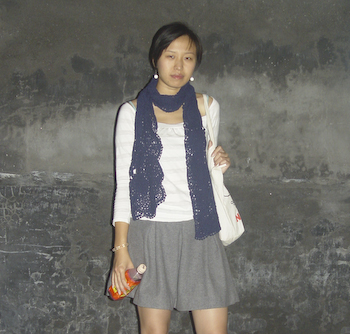
5. Though more attractive, this look is just as oblivious to the dictates of Chinese traditional medicine. Her mother would find wearing a scarf and a short skirt with no stockings to be an entirely nonsensical style.
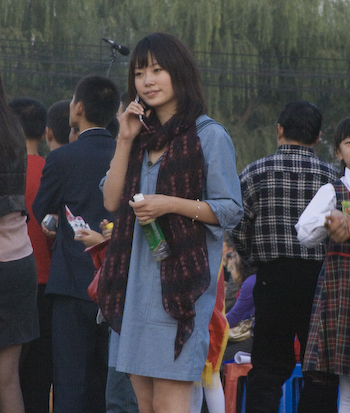
6. This voluminous one could easily cover the shoulders and perhaps even head if things got especially chilly.
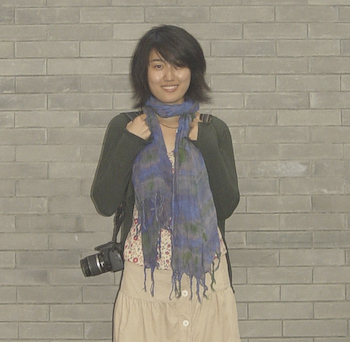
7. This thinner scarf makes a bit more sense as a mainly decorative item.
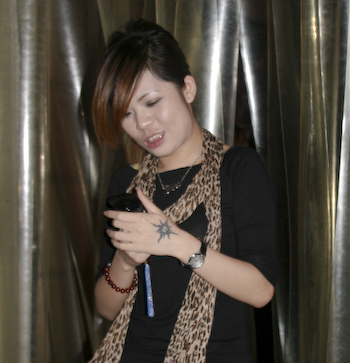
8. Drape a bit of cat around the neck to keep toasty while dancing at Mix. It matches perfectly with her hair.
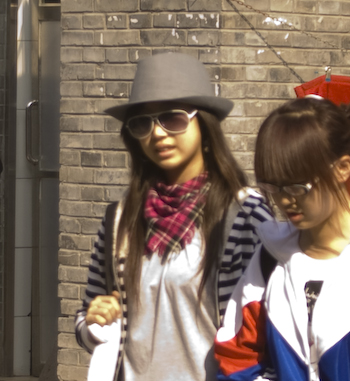
9. But the most common type of scarf has been plaid and made of thin acryllic. Every second girl under the age of thirty has been sporting a variety of lengths of this type of scarf.
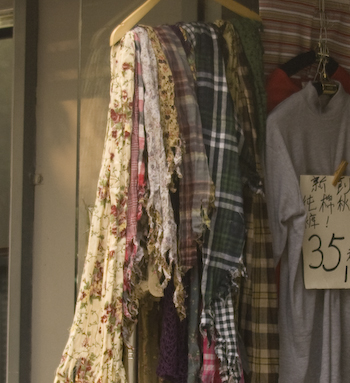
10. It’s not hard to see where they come from: bunches like this hang at every corner.
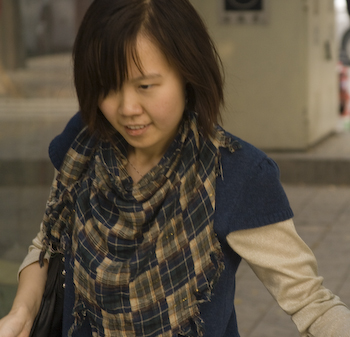
11. This is probably the most common look.
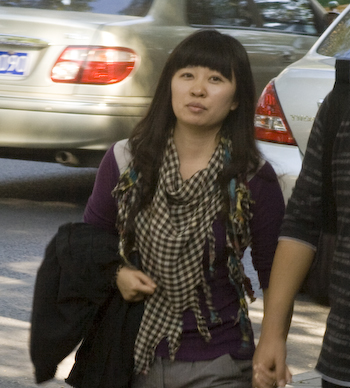
12. And other shapes abound as well. Now I am anxious to see what the scarf styles will be for the seasons in which one really does need the warmth.



